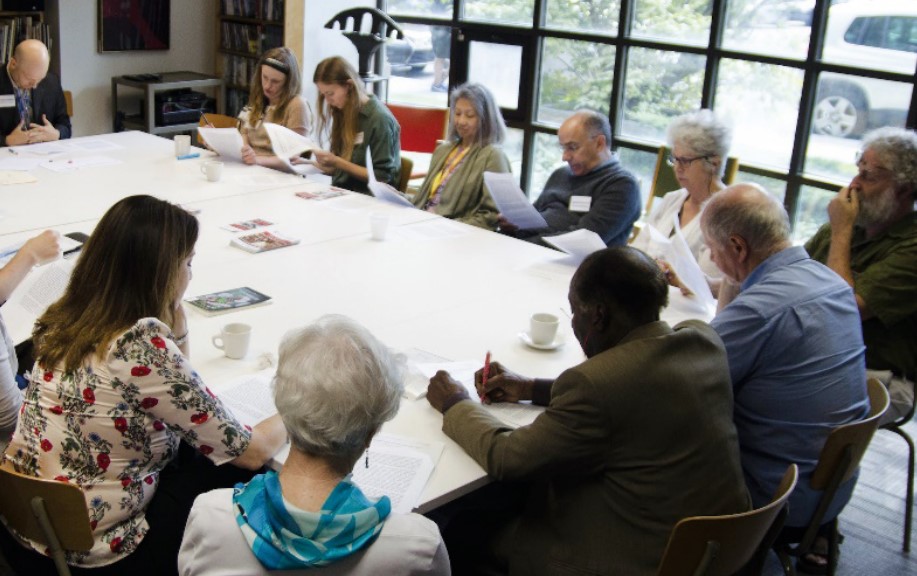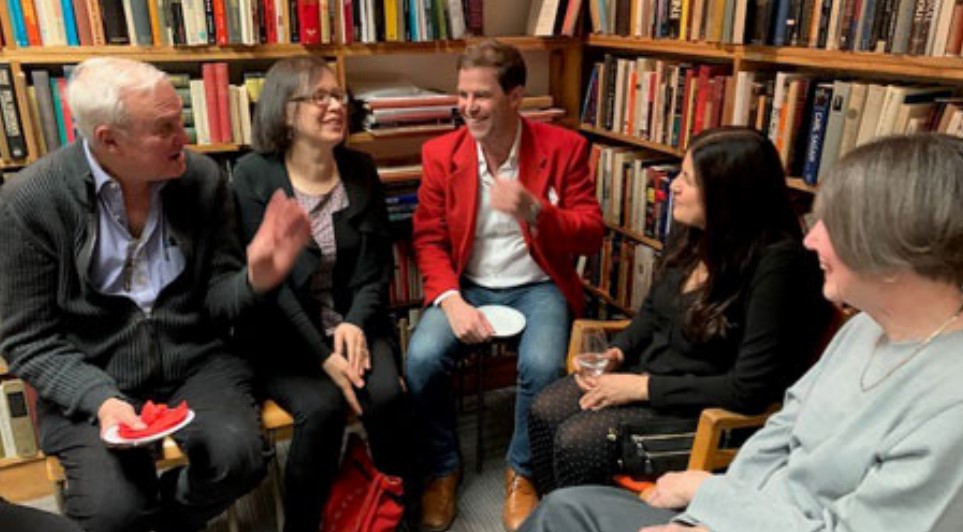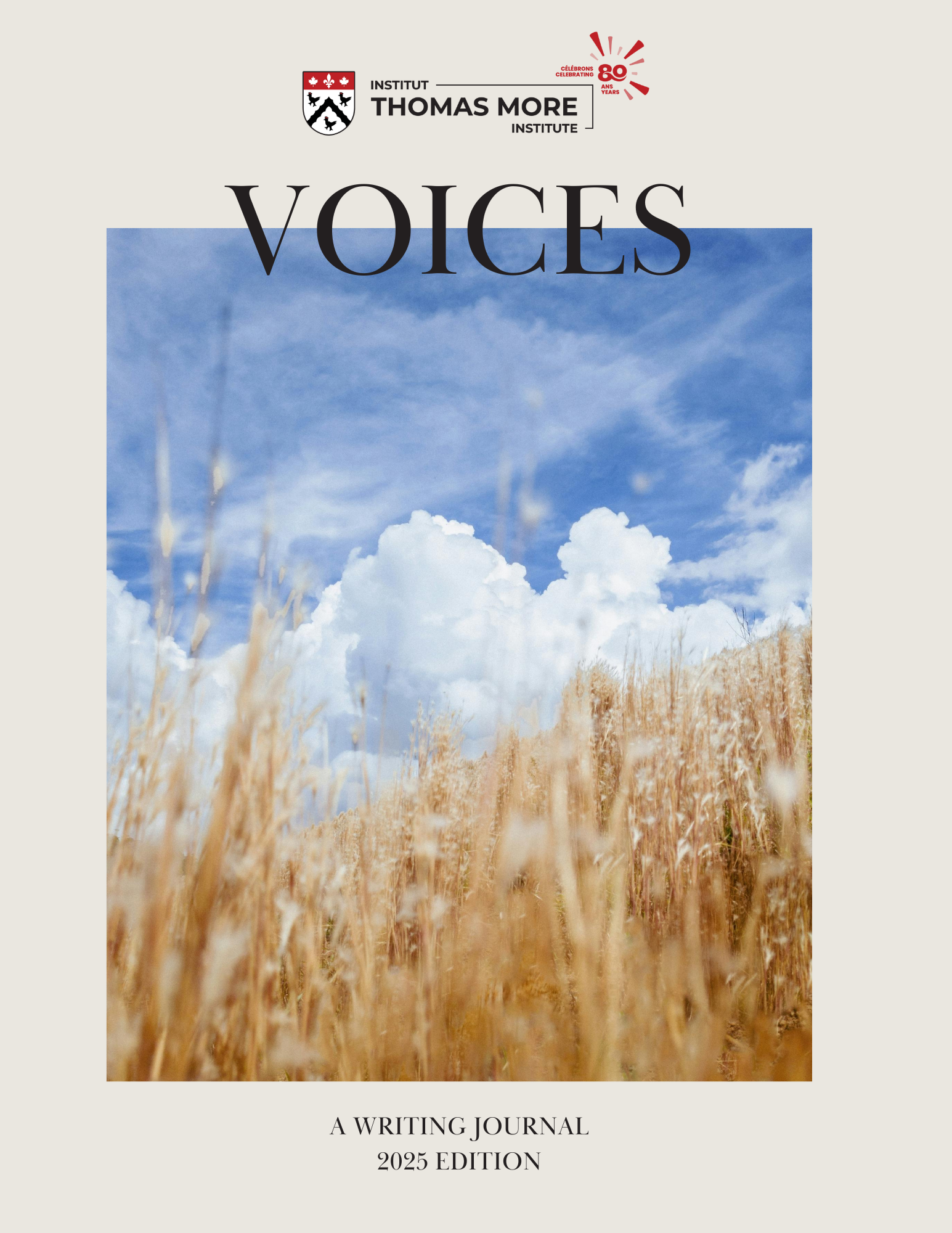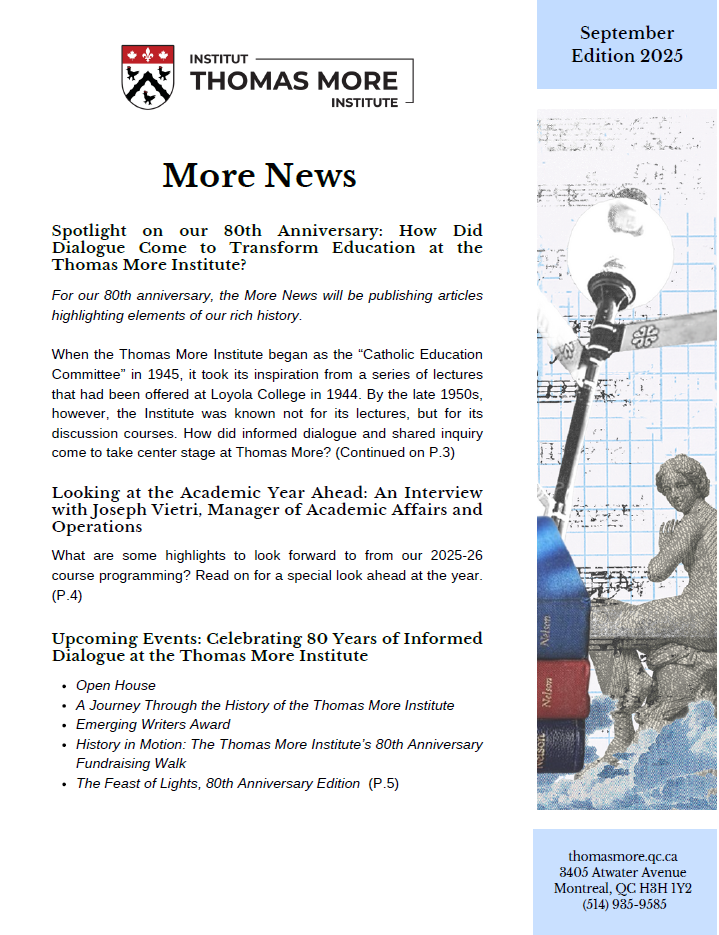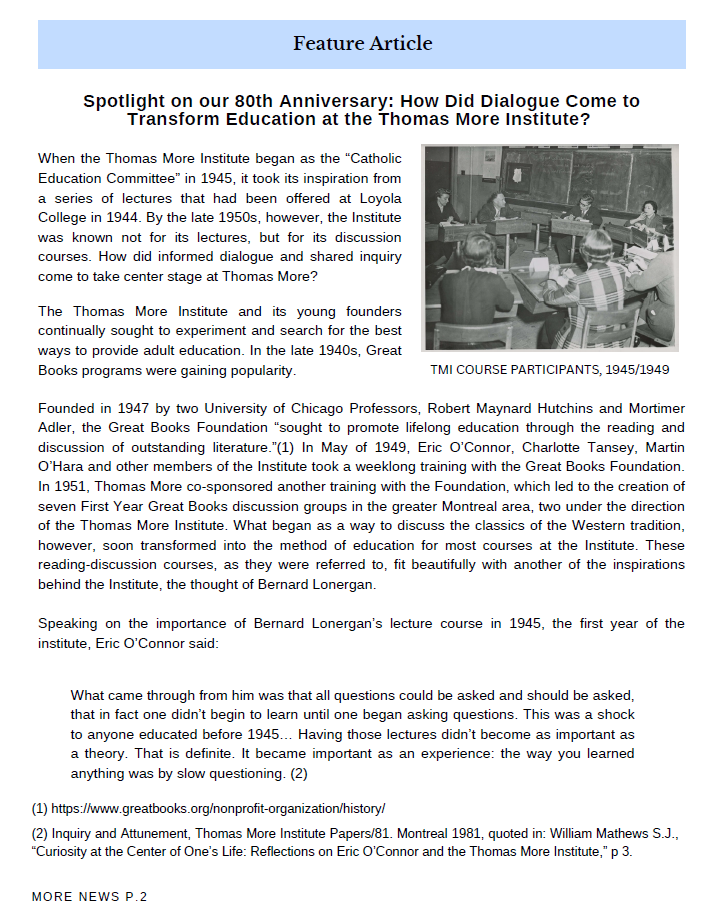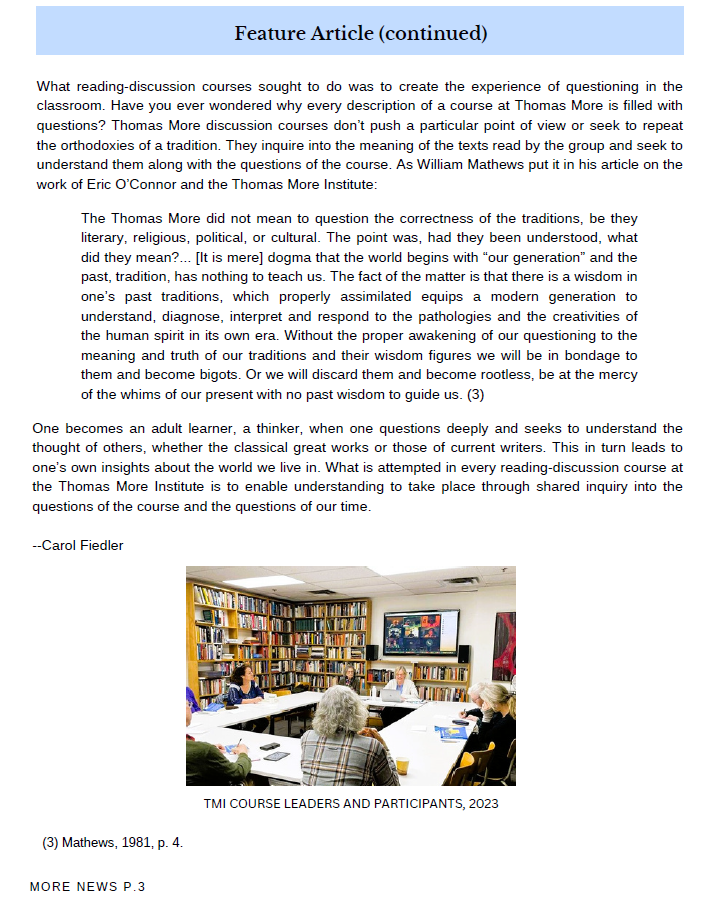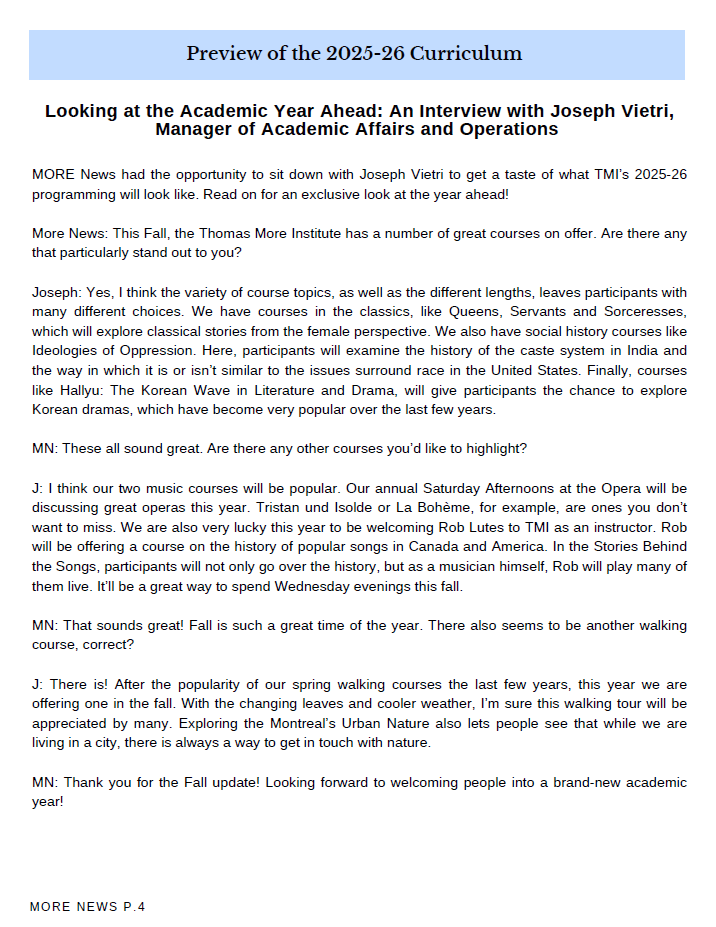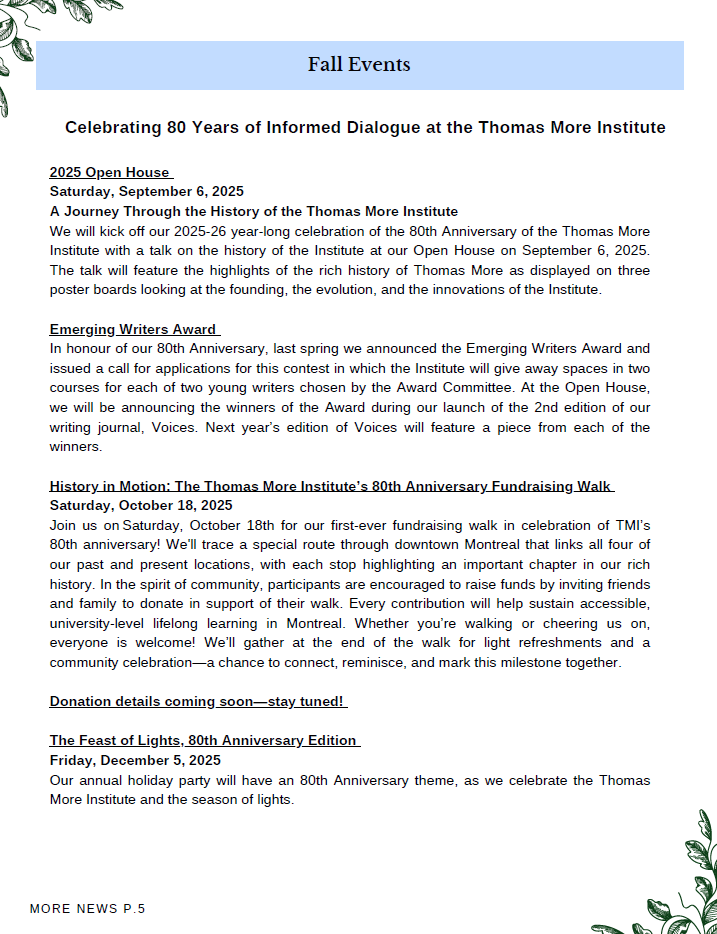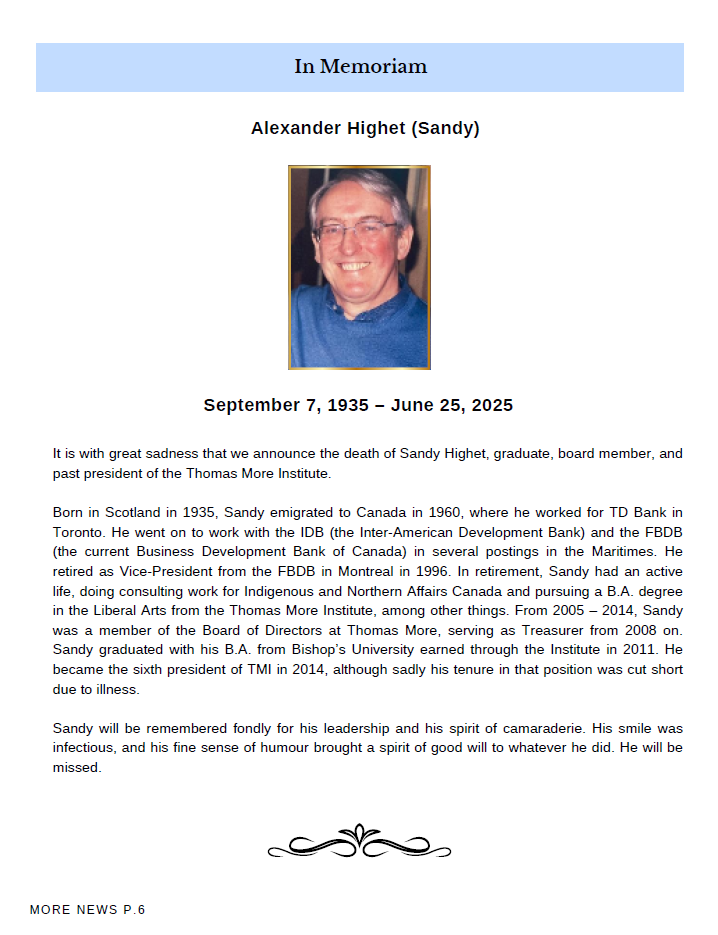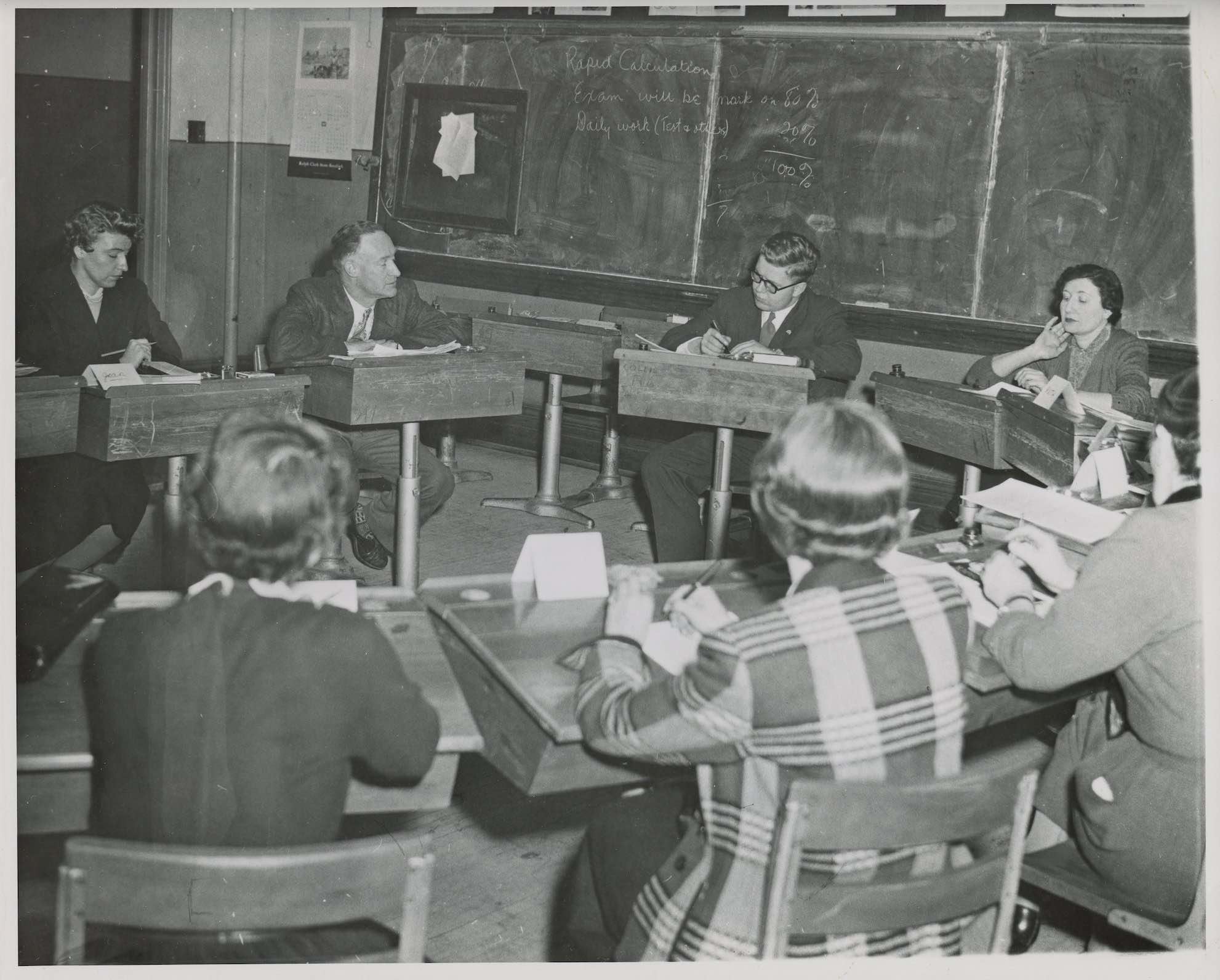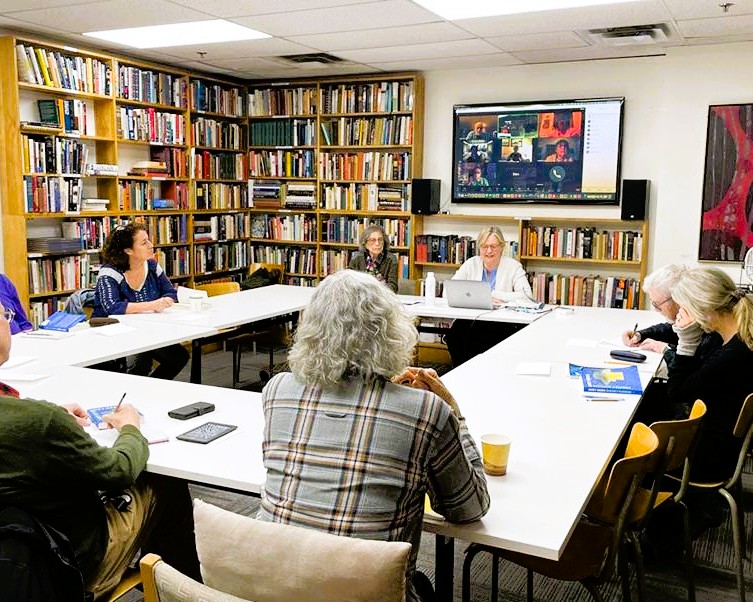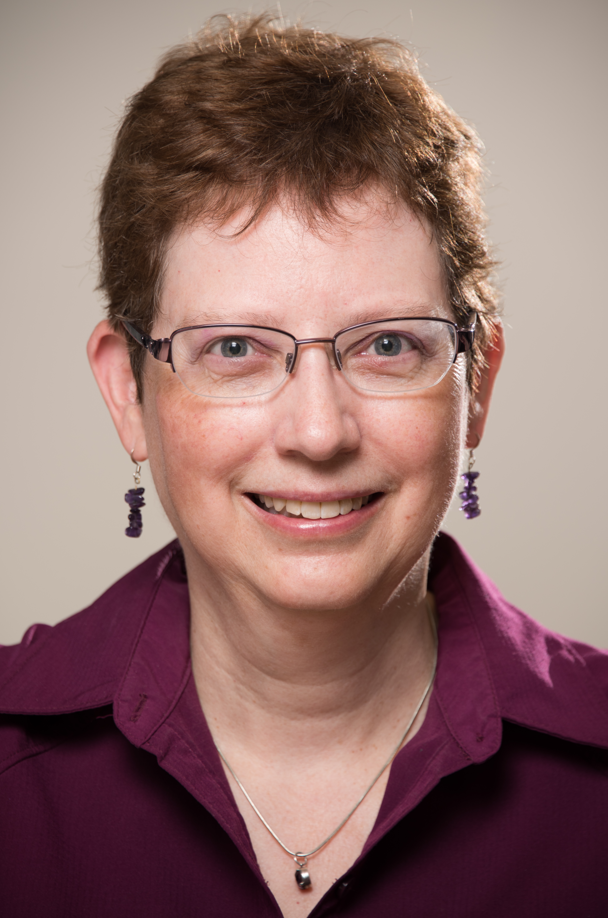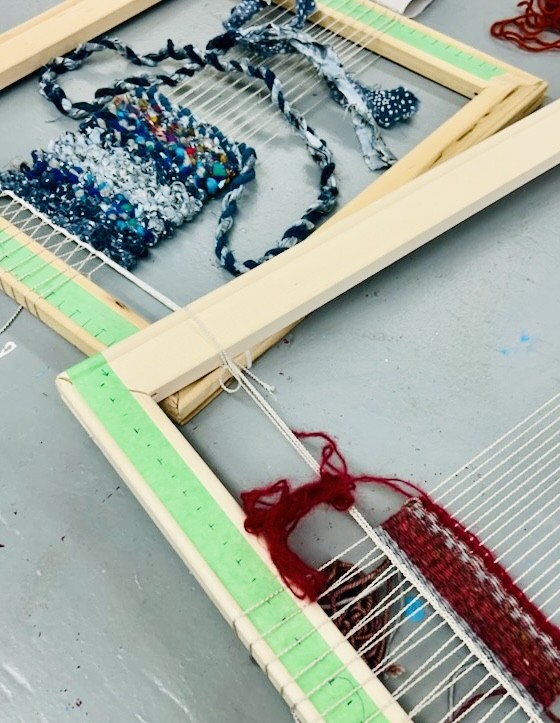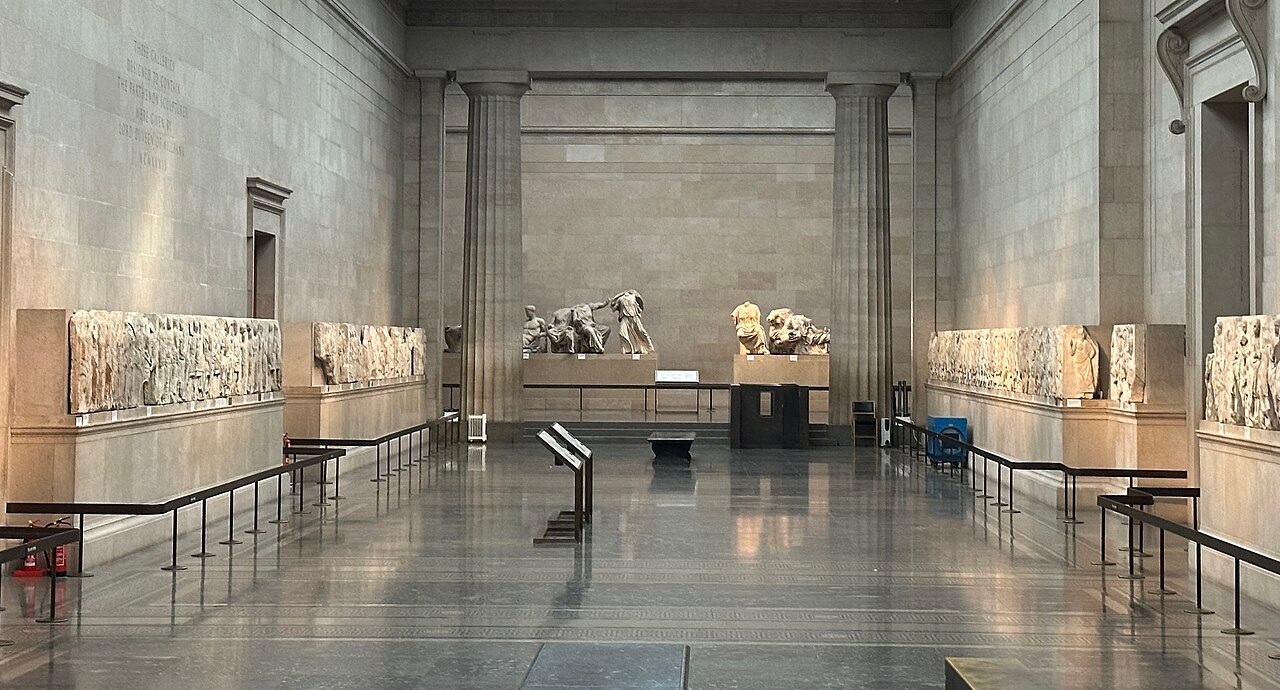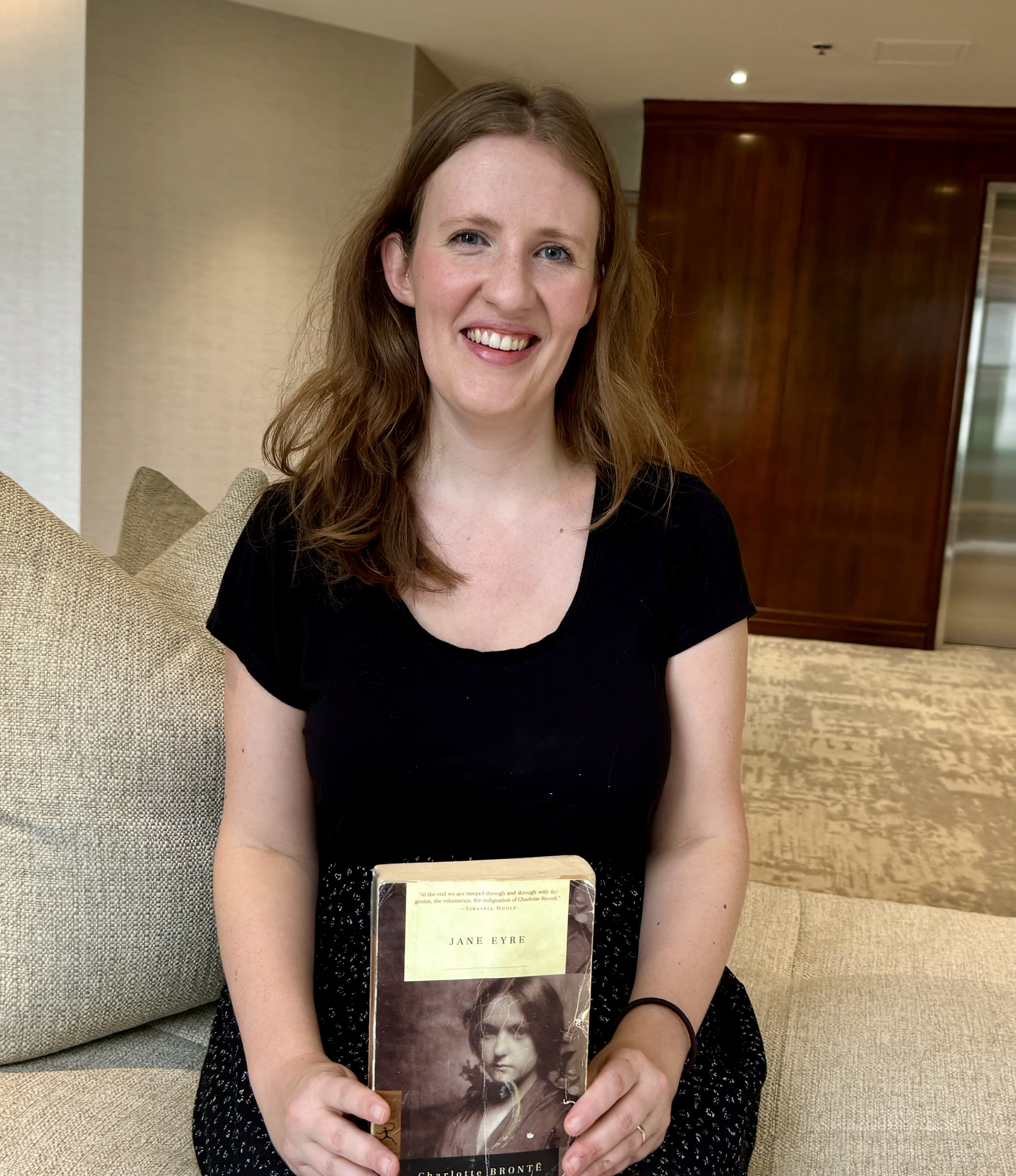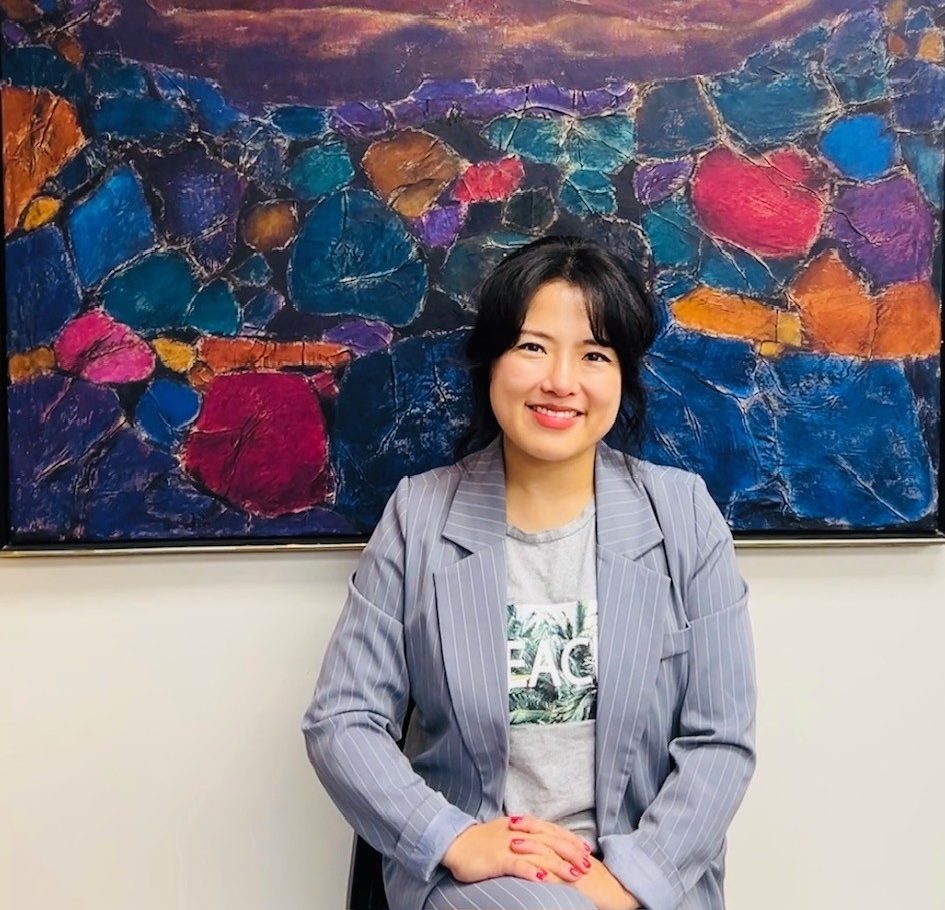
A few weeks ahead of the Intergenerational Art Morning, the Thomas More Institute had the opportunity to sit down with Saeun Song, an artist from Toronto pursuing a Ph.D. at Concordia University in Montreal. An Intergenerational Art Morning will be held at the Thomas More Institute on Saturday November 8, from 10 a.m. to 1:00 p.m. and is an activity that aims to give parents/grand-parents and children an opportunity to bond by collaborating on making works of art. Song will guide the participants in a series of child-friendly workshops, and lunch for all will be served!
What do you love about teaching art?
That’s a great question! I love teaching art because art class is very dynamic and multi-dimensional. It’s never linear, never one-dimensional. Everyone brings their own experiences and backgrounds, and their own skillset, which requires me to be more flexible and give them spontaneous directions and responses, which makes art class really abundant and makes it come alive. There are lots of different ways of working in art class, and materials [you could work with] are unlimited, so this is what I love about teaching art because there is potential and tons of possibilities.
You’ve offered workshops in Korea, China, Lebanon, and other countries. What’s something you learned from interacting with kids from around the world?
My work is community-oriented, so I’ve worked and taught in many different countries, especially in under-privileged areas, where the concept of art education doesn’t exist or public art education is limited. But you know, art comes from human beings, so whenever I see them working on art, I can see that [the children] already have the key aspect of being an artist, like creativity. They don’t hesitate, they don’t set limitations for themselves, which is really inspiring, because as you grow up, you start to think too much, and worry about making a mistake, hesitating, but they never do that. So that’s something really fascinating to watch, and also, that’s something that I learned from them a lot.
What’s the most important lesson or experience you want kids to take away from their workshops?
I want them to have fun. Because this is an intergenerational workshop, they will have their parents and grandparents as a collaborator, not just as a supporter or helper, so I want them to have lots of conversation creating beautiful memories. Because when you grow up, when you think of your parents or grand-parents, you just look back at all the memories that you shared when you were young, so I want them to have this workshop as a good memory, so that they can cherish it throughout their lifetime.
What do you find interesting or valuable about adults and kids doing a workshop together?
Honestly, when I heard you guys were preparing this intergenerational workshop, I thought: Wow, this is exactly what we need these days. Because we live in a world dominated by individualism, and families are often scattered, and they don’t have a real conversation under the same roof, even if they live together… So in that sense, I think this workshop is really meaningful, collaborating with your family members. So, I wouldn’t say collaboration is easy work—it’s actually a hard job, because you have to negotiate, communicate, and compromise, but at the end of the day, you will get a new perspective on each other, on different ways of working, or on the world. So this is really meaningful. And also, I believe they all bring different skill sets, which can lead to unexpected outcomes that would be really fun to witness. And I want them to have a really good conversation whenever they see the art, because art class will finish, but artwork remains forever.
